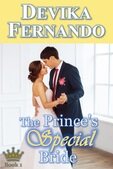Adite Banerjie | Paromita Goswami | Preethi Venugopala | Reet Singh | Ruchi Singh | Saiswaroopa Iyer | Sudesna Ghosh
L for Length
Why does chapter length matter?
- If your chapters all have a different length, it may disrupt the flow and pace of the story. There are readers who use a break or precious daily/weekly reading time to indulge in a chapter or two, and if yours are roughly the same length then they can plan accordingly.
- If your chapters are too short, they may lack detail or the story may feel disconnected or hurried.
- If your chapters are too long, readers might lose interest or not be able to squeeze in a whole chapter at a time.
Advice on chapter length in novels
There is no right or wrong chapter length because various factors can influence a writer’s decision. Generally, book chapters have a word count of 1,000 to 5,000. A good average to go by, especially for romance novels, is 3,000. Ultimately, the length should be decided by what happens in the chapters and whether the scene is finished. Genre can also play a role; a fast-paced thriller or a book with multiple points of view might have shorter chapters than traditional fiction or romance. Non-fiction books or novellas tend to have shorter chapters, as well. Similarly, authors should keep their audience in mind. Younger readers (children’s literature and YA) tend to have shorter attention spans, so a high word count wouldn’t make much sense.
While it is the best thing to settle on an average same length for all chapters in a novel, there can be exceptions. A flashback, for example, can be short. The same goes for a prologue or epilogue or for a shorter complete scene like a dream or a chapter from the villain’s point of view.
Why does the word count matter?
- If your book is to be accepted by a publishing house, heed the publisher guidelines. They often have minimum and maximum word counts per genre or per category. Similarly, the word count defines whether your book is a novella or a novel.
- If an author’s book is enrolled in Kindle Unlimited, they will get paid by ‘pages read’. A higher word count means more pages and thus more royalties. In a similar vein, authors can opt to set a higher price for a longer novel whereas novellas tend to be 99 cents or at least cheaper than novels.
- Even though more words could ultimately mean more income, there is one case in which they might also incur more cost: printed books. If an author uses print-on-demand services or offers paperbacks, more pages means higher printing costs, which can in turn lead to higher selling prices and might discourage readers from a purchase.
Advice on book length
As with chapter lengths, there is no one true rule for word counts. Even the definitions of novella and novel vary from genre to genre and publisher to publisher. Novellas have 20,000 to 45,000 words whereas novels range from roughly 50,000 to more than 100,000 words. But there are various exceptions. Fantasy invites long ‘epic’ novels, for example. Just think of Harry Potter, Lord of the Rings or A Song of Ice and Fire. The typical romance novels published by Harlequin etc. are comparatively short. Traditional fiction books outside this genre, however, are often longer than 80,000 words.
So do an author’s books all need the same length? No, not necessarily. While it makes a series more ‘uniform’ if all books share a similar word count, and while genre might play a role, varying lengths won’t confuse or irritate readers. They can see the page count before they make a purchase, and most readers are fine with different lengths as long as the stories hold their attention.
However: if a novella is too short, it might leave them disappointed; if a novel is too long, it might seem too daunting a task for someone who has limited reading time or is still unfamiliar with the author or unsure about the genre. The latter is why many authors offer a novella among their novels – some as a shortish debut to test the waters, others as a free or cheaper series starter, yet others as a prequel or bonus content. Some writers prefer to divide their longer-than-average opus into two or three reader-friendly ‘instalments’.














 RSS Feed
RSS Feed